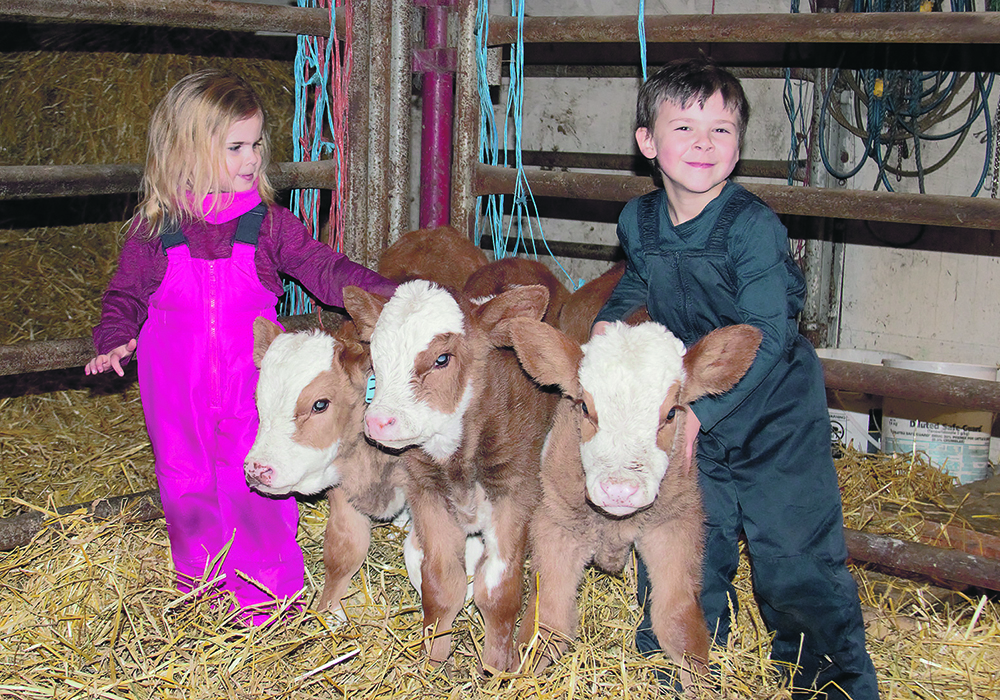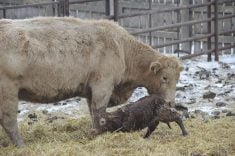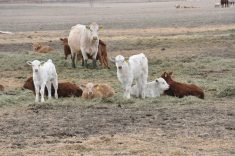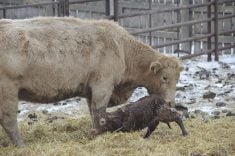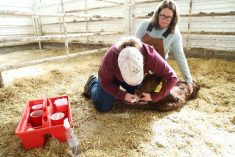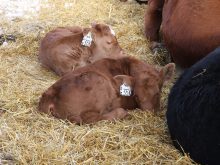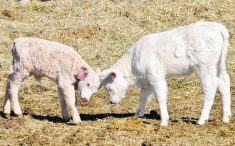Lonnie and Karen Brown wonder where it will end, considering the cow had a single calf two years ago and twins last year
Lonnie and Karen Brown have farmed for 35 years, raising cattle and growing grain on their mixed farm north of Westlock, Alta.
Before that Karen’s parents, Evan and Betty Rose Roberts, also farmed there.
On Dec 29, they experienced an event never before seen on Lone Stone Farms.
One of their cows, Hetty 38D, a Simmental, had a calf around 11 a.m. Their son, Nathan, who farms with Lonnie and Karen, was checking the cows. He put the cow and calf into the calving barn to give the calf a chance to dry off and the cow to mother up to her calf.
Read Also

Beef check-off collection system aligns across the country
A single and aligned check-off collection system based on where producers live makes the system equal said Chad Ross, Saskatchewan Cattle Association chair.
Karen said around 4 p.m., she was checking the camera in the barn and saw not just the one calf, but three surrounding the cow.
“I asked Nathan, ‘how many calves did you put in the back?’ ” Karen said. “He told me just one. We went out to the barn immediately to investigate, and yes, there were two more wet, just-born calves.”
Karen said in all the years at their farm, there has never been a set of triplets.
“This is her third calving,” she said.
“The first year she had one calf. Last year, she had twins. With triplets this year, I’m wondering if we are on a rising scale here.”
The calves are one female and two males, all more than 60 pounds and born unassisted.
Karen said the cow didn’t look big enough to be carrying more than 180 lb. of calves.
Lone Stone Farms is calving out 300 head this year, with half of them Simmental and the other half Red Angus.
Near the end of January, Karen said calving had gone well this year, with more than half of the herd calved out. The milder winter weather had been a blessing — easier on the cows, easier on the feed, and easier on them as well.



